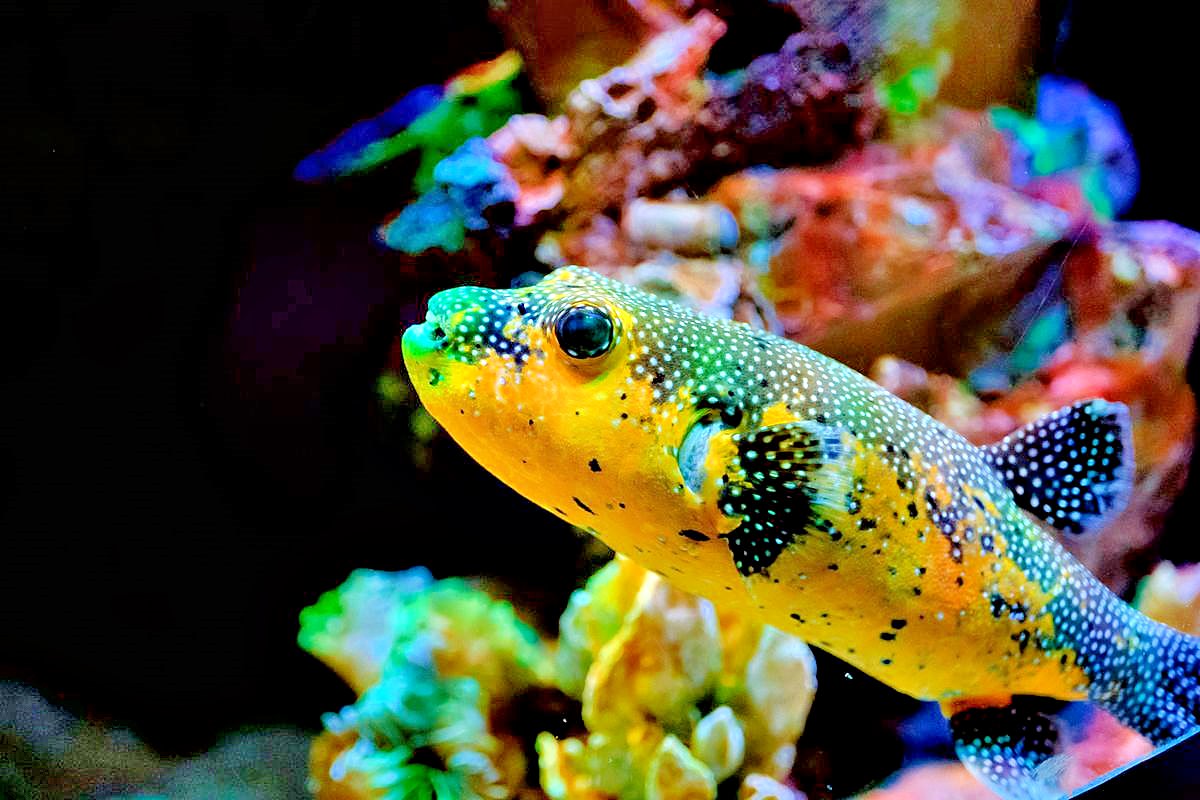A Delicacy with a Dark Secret 🍣⚠️
Pufferfish, or fugu as it’s known in Japanese cuisine, is renowned for its lethal toxicity. However, this peculiar fish does not actually produce the deadly poison itself. The source of the enigmatic tetrodotoxin (TTX) that makes pufferfish so perilous has long been a subject of intrigue. 🔍 This fascinating tale delves into the captivating history, scientific discoveries, and culinary traditions surrounding this notorious delicacy.
The Captivating Tale of an Elder 👴🍽️
A former colleague’s story from his childhood shed light on the mysterious toxin. Growing up near the Yangtze River, he witnessed how pufferfish were treated as a delicacy, yet with extreme caution. Fishermen would discard unwanted pufferfish, allowing villagers to claim them at their own risk – a taboo tradition to avoid responsibility in case of incidents. The intricate rituals involved in preparing and consuming these fish were steeped in superstition and reverence. 🐟⚠️
The Lethal Potency of Pufferfish Poison 💀
The toxicity of pufferfish is nothing short of astonishing. Its venom, TTX, is 1,200 times more potent than cyanide, making it one of the most deadly natural poisons known to humankind. A single pufferfish carrying a full load of toxin could potentially kill 30 adults with ease. No wonder even emperors and nobility refrained from indulging in this delicacy, fearing its potentially fatal consequences. Tales of accidental pufferfish poisonings have instilled a deep-rooted fear and respect for this culinary treasure. 👑🚫
An Unexpected Origin 🦠
Contrary to popular belief, pufferfish do not manufacture the lethal TTX themselves. Instead, the poison originates from a specific type of marine bacteria with which pufferfish engage in a symbiotic relationship. This remarkable discovery challenged long-held assumptions and sparked a flurry of scientific investigations. Astonishingly, newborn pufferfish are entirely non-toxic and only acquire the deadly bacteria later in life through their diet and environment, accumulating the toxin as they grow. 🐟👶➡️🐟☠️
The Rise of Non-Toxic Aquaculture 🌊🐟
This groundbreaking revelation paved the way for the cultivation of non-toxic pufferfish. By raising them in controlled environments without exposure to the toxin-producing bacteria, aquaculture farms can produce pufferfish that are safe for consumption, alleviating the risks associated with wild-caught specimens. However, scientists have observed abnormal behavior and reduced resilience in these toxin-free specimens, suggesting that TTX plays a vital role in their natural physiology and may confer evolutionary advantages. 🏭🐟🧪
Proponents argue that non-toxic aquaculture ensures a sustainable and ethical supply of this coveted delicacy, while detractors contend that the absence of TTX compromises the authentic flavor and experience of consuming pufferfish. This ongoing debate highlights the complex interplay between tradition, safety, and culinary authenticity.
A Delicacy Steeped in Tradition and Risk 🍣💉
Despite the inherent risks, the allure of pufferfish as a delicacy persists, particularly in Japan, where it holds a revered place in culinary heritage. Skilled chefs, known as fugu-shi, claim to possess secret detoxification methods, enabling them to serve even the most toxic parts, like the liver and ovaries, which are considered delicacies in their own right. However, the veracity of these claims remains uncertain, and the potential consequences of consuming improperly prepared pufferfish are grave, with numerous recorded fatalities throughout history. 👨🍳🔪⚠️
The mystique surrounding pufferfish is further amplified by its fleeting availability and the specialized training required to prepare it. Aspiring fugu-shi undergo rigorous apprenticeships, mastering intricate techniques and developing an intimate understanding of the fish’s anatomy to identify and remove the toxic portions with surgical precision.
Embracing the Unknown 🌍🔬
The saga of pufferfish toxicity exemplifies the profound mysteries that still exist in nature, waiting to be unraveled by scientific inquiry. As researchers continue to unlock the secrets of TTX and its implications for human health, new avenues for understanding and harnessing this potent compound may emerge.
Moreover, the pufferfish’s unique evolutionary adaptations, including its ability to inflate into a spiky ball as a defense mechanism, have captivated biologists and inspired biomimetic innovations in fields ranging from robotics to aerospace engineering.
As our culinary horizons expand, and our appreciation for diverse cultural traditions deepens, the pufferfish will undoubtedly remain a source of fascination, reverence, and culinary adventure for generations to come. 🍽️🌍
Copyright © 2025 Hea1th.net

